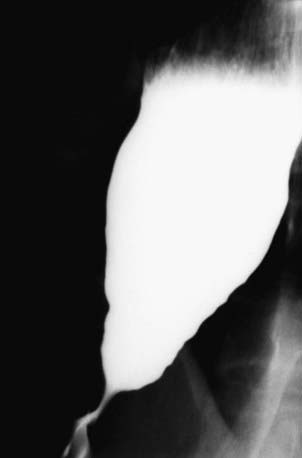Chapter 313 Dysmotility
Lower Esophageal and Lower Esophageal Sphincter Dysfunction (Smooth Muscle)
Achalasia manifests with regurgitation and dysphagia for solids and liquids and may be accompanied by undernutrition or respiratory symptoms; retained esophageal food can produce esophagitis. The mean age in children is 8.8 yr, with a mean duration of symptoms before diagnosis of 23 mo; it is uncommon before school age. Chest radiograph shows an air-fluid level in a dilated esophagus. Barium fluoroscopy reveals a smooth tapering of the lower esophagus leading to the closed LES, resembling a bird’s beak (Fig. 313-1). Loss of primary peristalsis in the distal esophagus with retained food and poor emptying are often present. Manometry is the most sensitive diagnostic test; it reveals the defining features of aperistalsis in the distal esophageal body and incomplete or absent LES relaxation, often accompanied by high pressure LES and low-amplitude esophageal body contractions.







